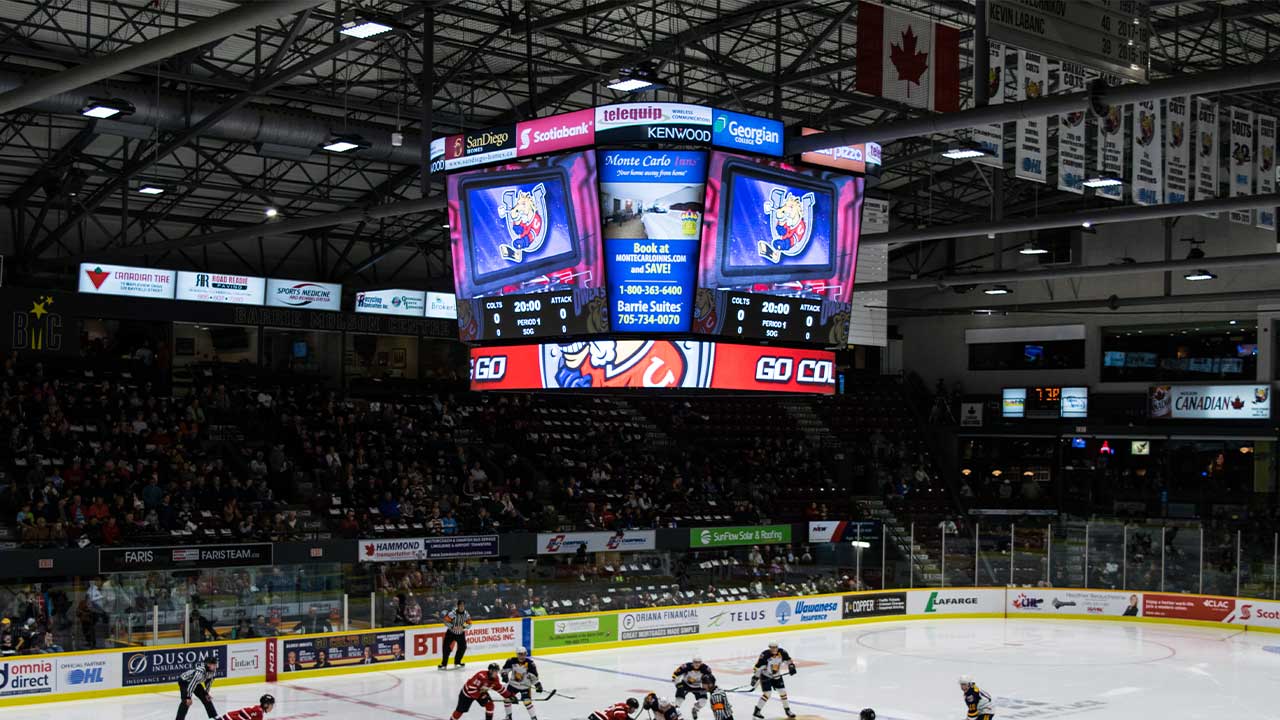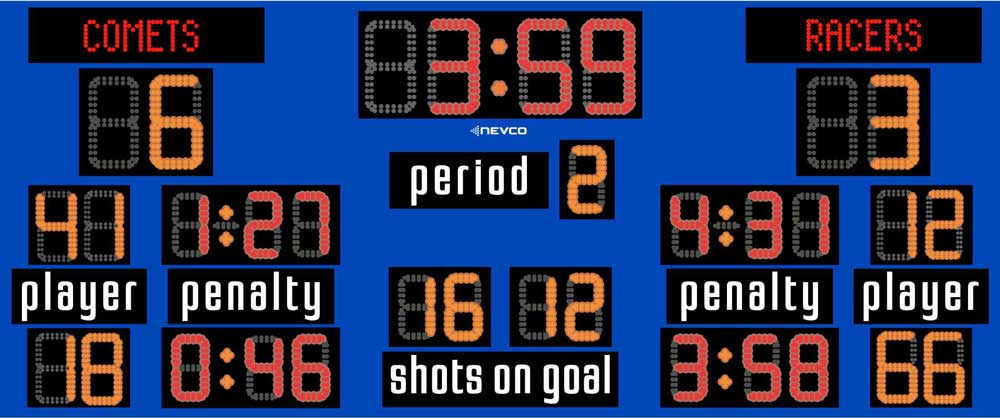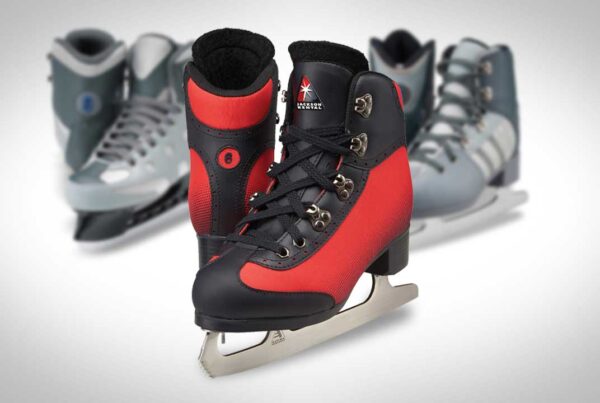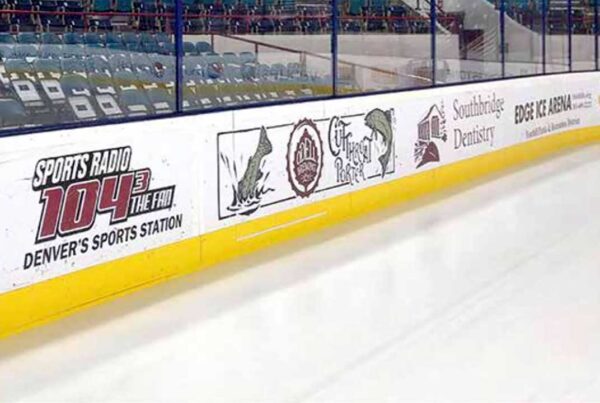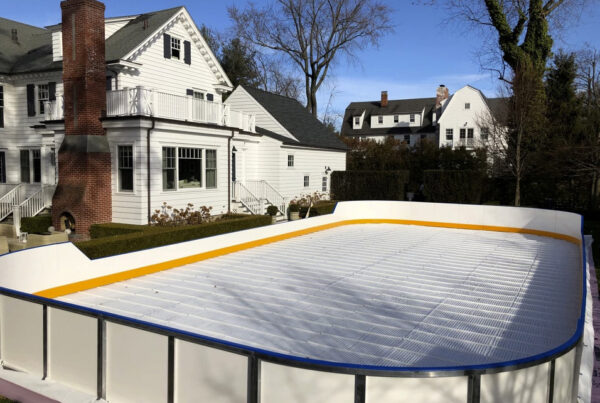Arena scoreboards not only keep the fans clued in to game stats, they also represent an opportunity to level up your advertising and facility visibility.
An arena scoreboard is considered an essential piece of equipment for fans and players alike for the most popular sports around the globe. From basketball to soccer to hockey, half the fun of competitive games comes in keeping score to see who is winning, and who is losing. Luckily for arena owners, with an arena scoreboard, keeping score and communicating game information to fans in the stands is easier than ever.
While these pieces of equipment are essential these days, there was a time before the scoreboard display existed. The history of the arena scoreboard is interesting and shows us how we quickly went from slates and flip cards to impressive LED display style screens that can provide fans and players with all kinds of info. Along with changing how we communicate game stats and info, scoreboard evolutions also expanded the kind of game info we can share and the kinds of advertising that can take place in arenas.
Let’s explore the history of the arena scoreboard, how it evolved, and why it’s so essential for creating a positive fan experience.
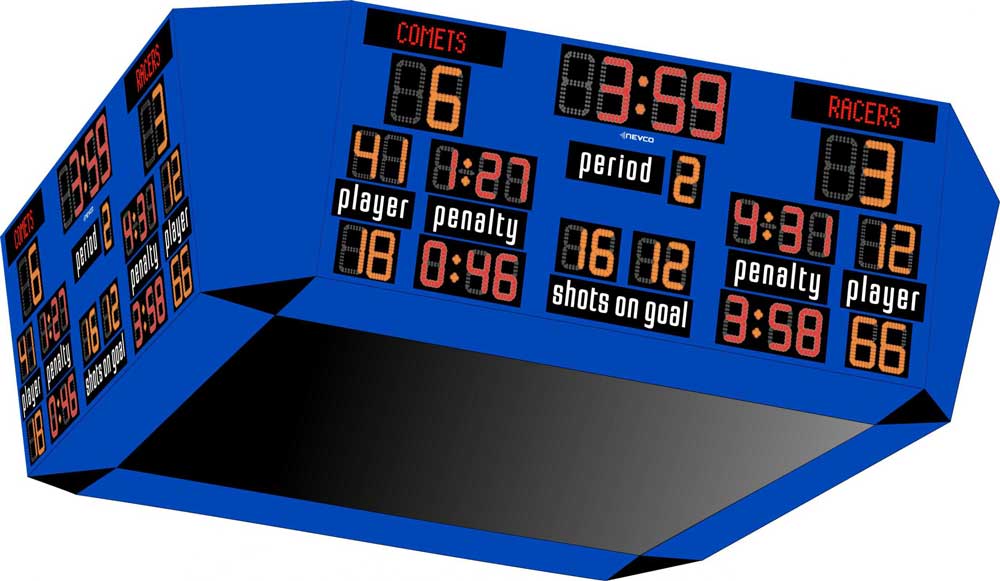
4770-ETN Arena Scoreboard
The History of the Arena Scoreboard
In the early days of competitive sport, a scoreboard was usually simple chalk and slate. Someone would be on standby watching the event and use chalk to keep score for both teams during a game.
The first manual scoreboard was premiered in the late 1800s, used by Harvard University during a football game in 1893. This manual scoreboard worked as a giant board, inside of which a scorekeeper would change numbers to reflect the game score live. This quickly became the most popular form of the scoreboard and became a staple in arenas around the world.
The manual scoreboard would eventually evolve, with technology allowing them to be operated electronically, and by fewer scorekeepers. Technology would also eventually lead to a new kind of scoreboard that featured led lights for numbers, and eventually, led video displays capable of showcasing live video alongside game scores during an event.
The invention of arena scoreboards that could showcase live video completely changed the capabilities of arena scoreboards. Now, along with displaying essential game information and scores like the old scoreboard could, arena displays could also show instant replay clips from the game, advertising graphics/videos, and other kinds of video footage and graphics.
This technology was huge in increasing the advertising potential of sports arenas. It also helped to aid arenas in their usage for other kinds of live event purposes, for example, utilizing scoreboards as video screens for live video during events like concerts.
What are Arena Scoreboards Used For?
Technology is changing many aspects of the sports watching experience, and arena scoreboards are no exception. Here are the different things video scoreboards are being used for today:
Keeping Score + Game Info
The main purpose of a scoreboard is, of course, to keep score. All scoreboards will have dedicated areas to showcase the most up-to-date scores for both the home and guest teams. However, depending on the sport being played, a scoreboard will also showcase other key information related to the game.
For example, a baseball scoreboard will also display game information including the current inning, strikes, outs, ball count, etc. In comparison, a hockey scoreboard alongside the score might also show info about the current period, and player penalty info.
Thanks to the invention of video board style scoreboards, it can be pretty simple to quickly change the graphics on a scoreboard to reflect information for different kinds of sports. For a new arena, this makes it easy to accommodate different kinds of sports all in one space.
Advertising
Another key use for arena scoreboards is for showing video and graphics related to advertising. While traditional scoreboards didn’t always bother with this function, the modern led video display scoreboard makes it easy to display advertisements alongside key game information and the score account.
In many arenas, LED scoreboards will use their main display to show game info and team logos. However, periodically these screens can change to showcase video advertisements during game breaks. Video screen displays might also have dedicated areas on the board to showcase the logo of the main sponsor, or rotate through different advertisements throughout the game.
With a video display scoreboard, advertising opportunities are truly endless. Arenas can get super creative with the kinds of sponsored content they can share during a game, opening up tons of unique revenue opportunities for sports teams and venue owners alike.
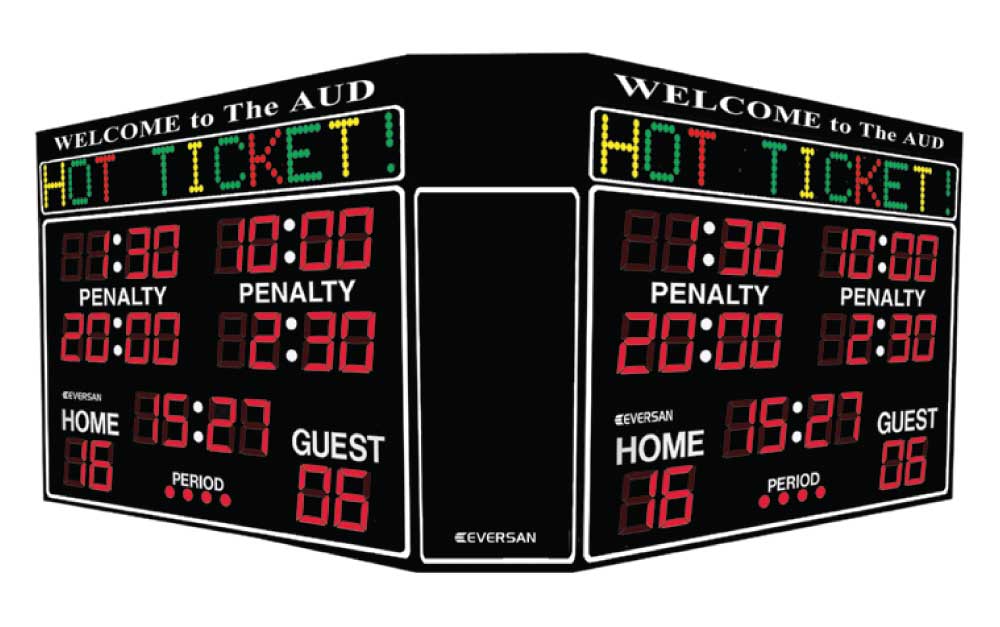
9785-4 Arena Scoreboard
Replays
One of the best uses of a video display arena scoreboard is its ability to showcase live video and replayed video content. For many sports fans, this is a great thing, because fans in the audience can now see instant replays of different plays during a game that they otherwise wouldn’t get to see sitting courtside.
This is just another way an arena scoreboard works to change how fans watch the game and the different kinds of information that can be relayed to them.
Should I Invest in a New Scoreboard?
As you can see, there are tons of benefits to investing in a new scoreboard if your sports arena doesn’t already have one!
Along with sharing key game information to people in the audience, a scoreboard makes it easier than ever to open up revenue opportunities via new sponsors. Modern scoreboards also improve the game viewing experience, thanks to their live video display capabilities making it easy to share instant replays and other videos to people in the audience.
Even if you can’t get a new scoreboard, a traditional manual or electronic scoreboard is still a necessary piece of equipment for any sports arena. A scoreboard is the easiest way to share key game information with your audience. It makes watching live sports a lot more fun, and much easier to follow along with.
Players and fans alike can appreciate the information shared on an arena scoreboard. Next time you’re contemplating renovations for your sports space, upgrading your arena scoreboard should definitely be kept in mind.
